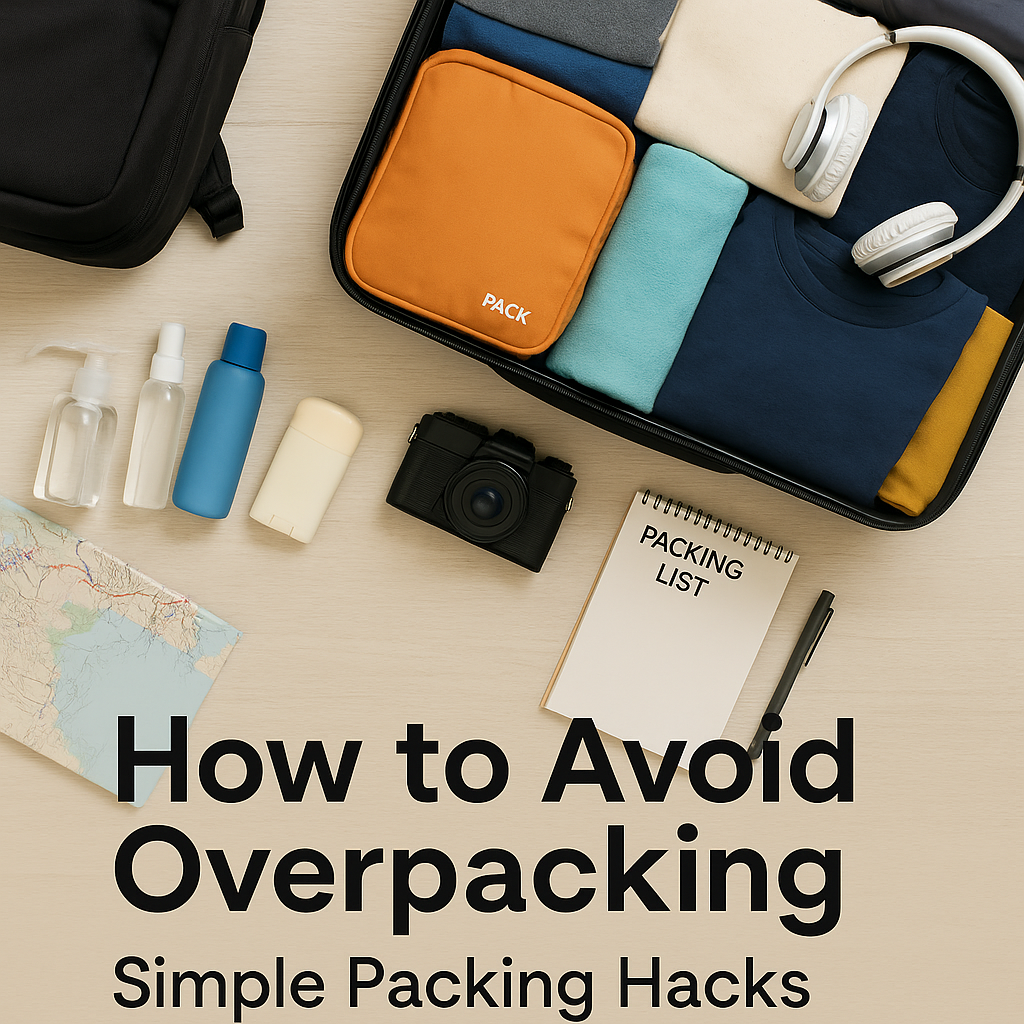Overpacking is one of the most common travel mistakes. It weighs you down, clutters your space, and creates unnecessary stress. Whether you’re going away for a weekend or a month, packing light not only saves time and money—it also makes traveling easier and more enjoyable.
This guide will help you stop overpacking for good with practical packing hacks, so you can focus on what really matters: the experience.
Why Overpacking Happens
Before fixing the problem, it helps to understand the cause. Most people overpack because of:
- Fear of forgetting something
- Uncertainty about weather or activities
- Wanting to be ready for every scenario
- Lack of planning or last-minute packing
- Thinking “just in case” too often
Awareness is the first step toward smarter choices.
Step 1: Start with a Packing List
Creating a list prevents emotional, last-minute decisions and ensures you only bring what you need.
What to include:
- Clothes (based on number of days and climate)
- Toiletries (only the essentials)
- Electronics and chargers
- Travel documents and money
- Health items (medications, masks, sanitizer)
- Day bag and reusable water bottle
Use apps like PackPoint, Travel List, or a simple checklist on paper.
Step 2: Choose the Right Bag
The larger your suitcase, the more likely you are to fill it. Downsizing helps enforce discipline.
Bag suggestions:
- Carry-on suitcase for short trips or minimalists
- Travel backpack for mobility and limited space
- Duffel bag for flexible packing on weekend trips
Pick a bag that fits your trip—not your fears.
Step 3: Use the 1-2-3-4-5-6 Rule
This popular minimalist packing rule works well for trips up to a week.
- 1 hat
- 2 pairs of shoes
- 3 bottoms (pants/shorts/skirts)
- 4 tops
- 5 pairs of socks
- 6 pairs of underwear
Adjust slightly based on your destination and activities, but stick close to this ratio.
Step 4: Pack Versatile Clothing
The key to packing less is bringing items that can be worn multiple ways.
Look for clothes that are:
- Neutral in color and style
- Easy to layer
- Wrinkle-resistant and quick-drying
- Convertible (e.g., zip-off pants, reversible jackets)
- Suitable for both casual and semi-formal situations
Stick to a simple color palette so everything mixes and matches.
Step 5: Use Packing Cubes or Compression Bags
Packing cubes help organize and compartmentalize your bag, while compression bags save space for bulky items.
Benefits:
- Keeps items sorted (e.g., tops, bottoms, underwear)
- Makes unpacking easier at your destination
- Limits how much you pack—once the cube is full, stop adding
Avoid overstuffing them—you’re not solving the overpacking issue if your bag is still bursting.
Step 6: Limit Toiletries to the Essentials
Toiletries are a common source of bulk and weight. Bring only what you need for the duration of your trip.
Tips:
- Use refillable travel-size containers (under 100ml)
- Bring solid versions: shampoo bars, soap bars, toothpaste tabs
- Skip extras like full-size hair tools unless essential
- Many hotels provide basics like shampoo and body wash
Remember, most items can be purchased at your destination if necessary.
Step 7: Wear Bulky Items in Transit
To free up space in your bag:
- Wear your heaviest shoes or jacket on the plane
- Carry your sweater or scarf as a pillow
- Use jacket pockets for small items like headphones or snacks
You stay warm during travel and save room in your luggage.
Step 8: Avoid “Just in Case” Items
If you pack for every possible scenario, your bag will be overflowing. Be honest about what you’ll actually use.
Ask yourself:
- Have I ever needed this on past trips?
- Can I buy or borrow it if necessary?
- Is it appropriate for my actual itinerary?
If the answer is no or maybe, leave it behind.
Step 9: Do a Final Edit
Once you’ve packed everything, take one final look and remove at least 2–3 items.
You’ll likely realize you packed duplicate items or things you won’t really need. Editing helps refine your travel essentials over time.
Step 10: Use Technology for Packing Support
Leverage tools that help you stay minimal and organized.
Helpful tools:
- Google Keep or Evernote for shared packing lists
- PackPoint to create lists based on destination and weather
- TripIt for itinerary organization (to help match clothes to events)
Having your plan accessible on your phone prevents guesswork.
Final Thoughts: Travel Lighter, Live Freer
Overpacking weighs more than just your bag—it slows you down and adds unnecessary stress. But when you travel light, you move more freely, spend less time worrying, and focus more on the experience.
Start small, experiment, and refine your packing style. You’ll find that less truly is more—and you’ll never look back.
